#louis huet
Explore tagged Tumblr posts
Text







Plaque en hommage à : Morts de la Seconde Guerre mondiale
Type : Commémoration
Adresse : Préfecture de Police de Paris, 66 boulevard de l'Hôpital, 75013 Paris, France
Date de pose : Inconnue
Texte : A nos camarades des Services techniques de la Préfecture de Police, morts pour la France, 1939-1944. DUBENT Edmond, Cre. de Police, BILLET Pierre, DUGARREAU Jean, DUPONT Henri, HUET Louis, HUTIN Marcel, MOULIN Louis, PONSART Jean, POTHIER Arthur, RODON Raymond, TORRESI Barthélémy, MONNIER André
Quelques précisions : Considérée comme le conflit le plus meurtrier de l'histoire notamment en raison du fait qu'elle a fait des victimes dans l'ensemble des catégories de la population, la Seconde Guerre mondiale a prélevé un lourd tribut aux forces de police françaises qui se sont opposées à l'invasion allemande, en particulier lors des combats pour la Libération en 1944. Les noms mentionnés sur cette plaque commémorative ne représentent qu'une fraction des nombreux gardiens de la paix tombés lors du conflit. Edmond Dubent (1ère photo), membre de la Résistance, fondateur du groupe résistant L'Honneur de la Police et décédé en 1943, est également honoré par une autre plaque commémorative située sur la place du Châtelet à Paris. Pierre Billet et Henri Dupont moururent en déportation après avoir été arrêtés en 1943, tout comme Barthélémy Torresi, interpellé l'année suivante. Jean Dugarreau (2ème photo), Louis Huet (3ème photo), Marcel Hutin, Louis Moulin, Arthur Pothier (4ème photo), Raymond Rodon (5ème photo) et André Monnier (6ème photo) font partie des nombreux policiers morts lors de la libération de Paris. C'est également le cas de Jean Ponsart, qui est honoré par une autre plaque commémorative située sur la place de la République.
#collectif#commemoration#policiers#seconde guerre mondiale#resistance#france#ile de france#paris#non datee#edmond dubent#pierre billet#henri dupont#barthelemy torresi#jean dugarreau#louis huet#marcel hutin#louis moulin#arthur pothier#raymond rodon#andre monnier#jean ponsart
0 notes
Text


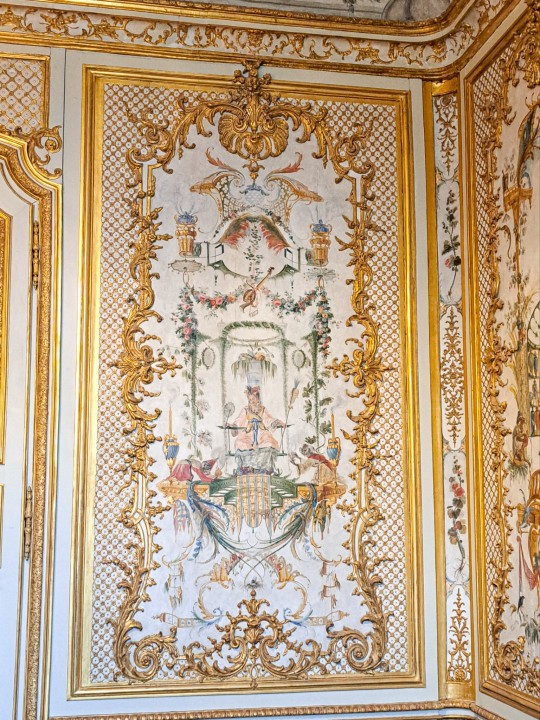
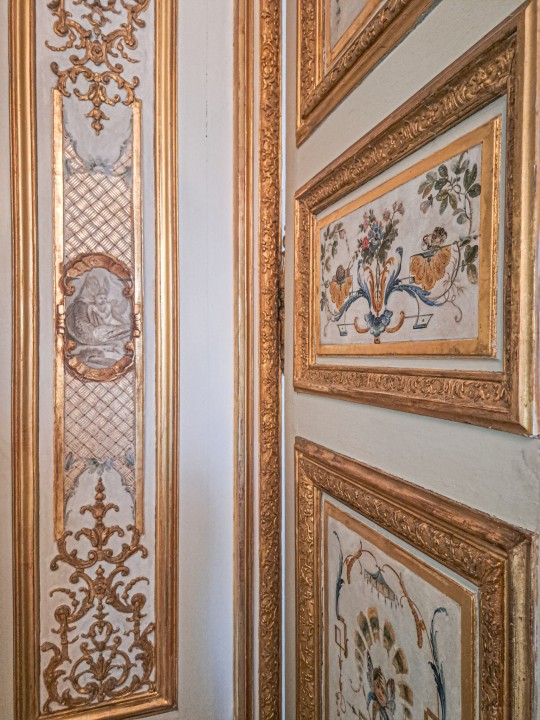




The Grande Singerie of the Château de Chantilly, a boudoir originally intended to house the porcelain of the Duke of Bourbon, offers a decor characteristic of the rocaille style mixing antics and Chinoiserie treated in a fanciful or allegorical way. It owes its name to the fact that the scenes represent monkeys serving men and vice versa.
These paintings on paneling, attributed to Christophe Huet (1700-1759), present an exceptional example of the taste quite common in the 18th century for Chinese oriental exoticism.
In 1710 the Château de Chantilly returned to Louis-Henri Bourbon-Condé (1692-1740), Duke of Bourbon who continued the development undertaken by his grandfather, the great Condé. The decor of the small castle was thus remodeled in 1737, the date of the execution of the Grande Singerie which is attributed to Christophe Huet, a renowned painter of paintings of animals and birds. But for a long time we hesitated about the author (Watteau, Claude Gillot, Audran?) because the archives do not reveal any payment made by the duke for the decor of the two antics: the Grande Singerie is one of the large apartments on the first floor while the Petite Singerie is located on the ground floor. However, recent restorations have revealed the date of execution of the boudoir: the inscription “1737” is painted on the block of marble that the monkey sculptor models. This is how we were able to eliminate the long-suspected authors: Watteau, who died in 1721, Claude Gillot, who died in 1722 and Claude Audran, who died in 1734. From then on, the decorations of the Singeries were attributed to Christophe Huet who, moreover, worked for the Condé family in 1734-1735. The workmanship and style of two other decorations still visible and created by Huet made it possible to make these connections: the Cabinet des Singes of the Hôtel de Rohan (today National Archives in Paris) in 1749-1752 and the Chinese Salon of Château de Champs-sur-Marne before 1755.
Huet was a student of Gillot and we know that he collaborated with Audran for the Château d'Anet in 1733. His style is borrowed from those of Berain, Audran and Watteau and Boucher. He had two collaborators: Dutour for the animals and Crépin for the landscapes.
#chateaudechantilly#chantilly#france#chateau#castle#arte#art history#historic buildings#architecture#europe#architectural history#historical#historical interior#apes#monkeys#singes#singerie#painted decoration#decoration#interior#interiors#interior design#interieur#interiorstyling#decorative painting#history#histoire
111 notes
·
View notes
Text
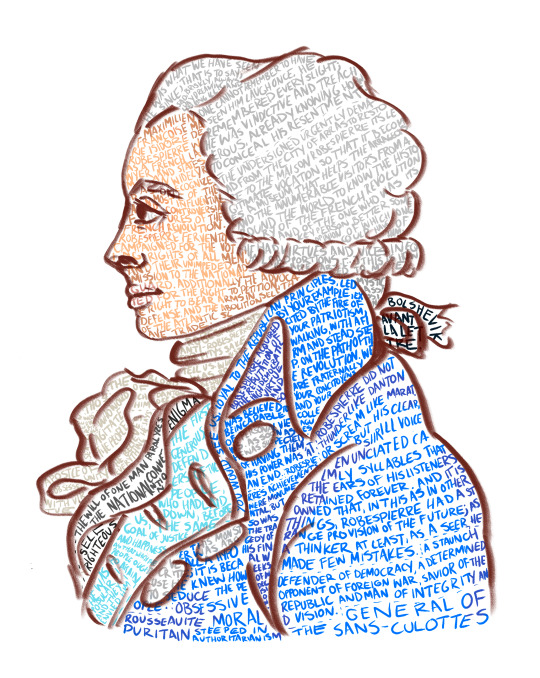
maximilien robespierre (6 may 1758-6 may 2024) and the ways he's been described. sources for each quotation under the cut.
disclaimer: I don't agree with everything quoted here, and some of them are truly incomprehensibly batshit (looking at you, betty from finance). primary sources are in bold. no discernable order.
wikipedia introduction louis-marie stanislas freron ARBR petition bertrand barere several deputies defended by robespierre germaine de stael mary duclaux peter mcphee georges lefebvre alexandre dubois-crance lazare carnot jonathan israel vladimir lenin alphonse aulard marc bloch citizen garnier (prenom unknown) pierre-joseph cambon manon roland honore mirabeau jeremy popkin sieclesetcieux on tumblr gracchus babeuf ruth scurr marie-helene huet
#pigeon.img#french revolution#frev#frev art#frevblr#robespierre#maximilien robespierre#etre supreme this took so fucking long#anyways happy bday robespierre#(pls come back we could do with some decent politicians again ty)
133 notes
·
View notes
Text


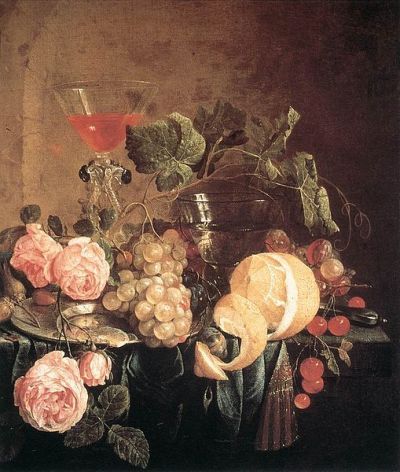
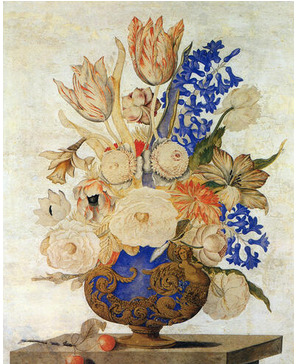
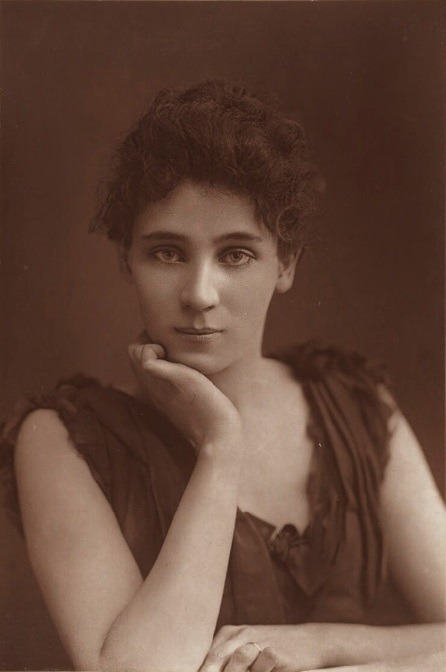


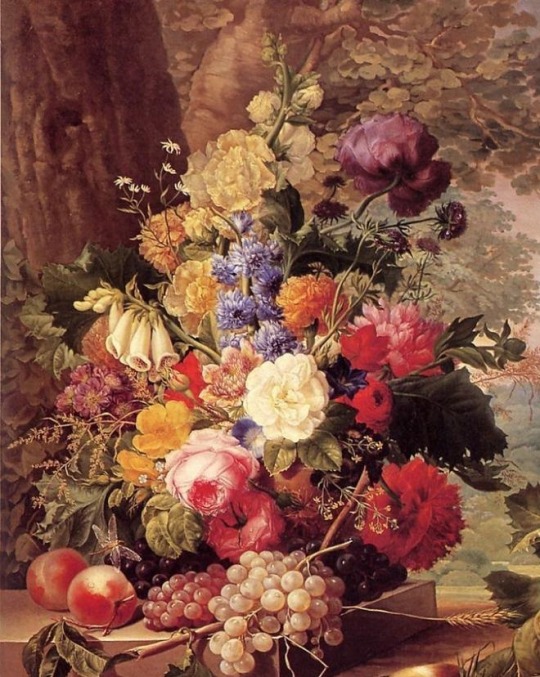

Message in a Haunted Mansion art part IV (part I, part II + part III)
1- February in the Isle of Wight by John Brett, 1866 (on the left/creaking side of the main stairs)
2- Still Life with Flowers and Fruit by Jan van Huysum, c.1700-1750 (dining room, near side)
3- Still-Life with Flowers and Fruit by Jan Davidsz. de Heem, c.1650 (dining room, far side)
4- Gilded and Embossed Vase by Andrea Scacciati, 1674* (parlour, beside the fireplace)
5- Elizabeth Robins by W. & D. Downey, 1893 (nancy's room, on desk)
6- Fruit and Flowers by Paulus Theodorus van Brussel, 1789 (dining room, near side)
7- Flowers in a Vase by Jan Brueghel the Elder, 1588-1625 (cover of the magazine in Louis' briefcase)
8- Large Still Life with Flowers (cropped) by Josef Steiner, c. 20th century (dining room, far side)
9- 18th century Gobelins tapestry design, tapestry after Jean-Baptiste Huet, 1785 (magazine in dining room)
*pictures now image collection, my best friend & my enemy, strikes again; alamy's date is just straight-up wrong, because it's 40 years after Scacciati's death? Mary Evans lists 1674, which is at least possible, but as ever I'm not thrilled to rely on info from image sourcing websites.
27 notes
·
View notes
Text
Les sociétés à l’heure de l’application de la directive CSRD
https://justifiable.fr/?p=2176 https://justifiable.fr/?p=2176 #CSRD #directive #lapplication #les #lheure #sociétés Présentation Publiée le 14 décembre 2022, la directive concernant la publication d’informations en matière de durabilité des entreprises (aussi appelée CSRD) a été transposée en droit français par une ordonnance du 6 décembre 2023. Cette ordonnance prévoit de nouvelles obligations de communication pesant sur les entreprises, concernant à la fois la durabilité et des obligations ESG (environnement, social, et gouvernement d’entreprise). Les plus grandes sociétés sont d’ores et déjà soumises à ce texte depuis le 1er janvier 2024, mais le 1er janvier 2025 représente aussi une date importante, alors que de nombreuses sociétés devront alors appliquer les règles imposant une transparence nouvelle. Quelques jours avant cette nouvelle date d’application, des universitaires et praticiens présentent la directive CSRD et sa transposition, ainsi que d’étudier son application présente et à venir dans le cadre d’un colloque virtuel. Programme 14h00 : Allocutions d’accueilChristophe Daniel, Maître de conférences en sciences économiques, doyen de la Faculté de Droit, d’Economie et de Gestion d’AngersAdrien Bascoulergue, Doyen de la Faculté de Droit Julie-Victoire Daubié – Université Lumière Lyon 2, Maître de conférences en droit privé Propos introductifsFrançois Barrière, Professeur à la Faculté de droit Julie-Victoire Daubié – Université Lumière Lyon 2, co-directeur de la double licence droit – économie et gestionMatthieu Zolomian, Maître de conférences à l’Université d’Angers Les enjeux de la directive CSRDNathalie Huet, Chargée d’études en droit des affaires, CCI Paris Ile de France Le champ d’application de la directive CSRDEmilie Gicquiaud, Maître de conférences à l’Université d’Angers Des obligations à la portée de toutes les sociétés ?Guilhaume Agbodjan, Avocat, Cabinet Bredin Prat, en détachement au Cabinet Anderson Mori Tomotsune (Japon) Les incidences de la directive CSRD sur le reporting taxonomieJean-Louis Navarro, Maître de conférences à la Faculté de droit Julie-Victoire Daubié – Université Lumière Lyon 2 La certification des rapportsAurélien Rocher, Maître de conférences à la Faculté de droit Julie-Victoire Daubié – Université Lumière Lyon 2 Le reporting extra-financier, quel impact ?Laurent Gautier, Avocat associé, Darrois Villey Maillot Brochier Non-EU Multinantionals facing the CSRDSimon Toms, Avocat associé, Skadden Arps, Slate, Meagher & Flom LLP and Affiliates La CSRD : risques et opportunitésMichèle Lacroix, Group Head of Sustainability, Scor SE Questions & Réponses 18h00 : Propos conclusifs : un regard hors UEGaby Chahine, Professeur à l’USEK (Liban), Magistrat Ce colloque est éligible à la formation continue des avocats. Si vous souhaitez bénéficier d’une attestation de présence, cochez « oui » à la question « Le colloque est éligible à la formation continue des avocats. Souhaitez-vous bénéficier d’une attestation de présence ? » dans le formulaire d’inscription : Réponse au Formulaire L’évènement est gratuit et accessible via Teams. Colloque organisé par la Faculté de droit, Université Lyon 2 et le Centre Jean Bodin, Université d’Angers sous la direction de François Barrière, Professeur à la Faculté de droit Julie-Victoire Daubié – Université Lumière Lyon 2, co-directeur de la double licence droit – économie et gestion, et Matthieu Zolomian, Maître de conférences en droit privé à l’université d’Angers. Source link JUSTIFIABLE s’enrichit avec une nouvelle catégorie dédiée à l’Histoire du droit, alimentée par le flux RSS de univ-droit.fr. Cette section propose des articles approfondis et régulièrement mis à jour sur l’évolution des systèmes juridiques, les grandes doctrines, et les événements marquants qui ont façonné le droit contemporain. Ce nouvel espace est pensé pour les professionnels, les étudiants, et les passionnés d’histoire juridique, en quête de ressources fiables et structurées pour mieux comprendre les fondements et l’évolution des normes juridiques. Plongez dès maintenant dans cette catégorie pour explorer le passé et enrichir vos connaissances juridiques.
0 notes
Text
A Guide to French White Wines

When it comes to wine, France stands as one of the most iconic producers in the world, known for its diversity and rich history. French white wines, in particular, have gained global recognition for their refined characteristics and are cherished by wine lovers everywhere. Let’s explore the key types of French white wines, the regions they come from, and some of the top brands that produce these wines.
1. Chardonnay - Burgundy (Bourgogne)
One of the most popular and widely cultivated white grapes, Chardonnay thrives in Burgundy. This region is renowned for producing some of the most prestigious and nuanced white wines, known for their ability to age gracefully and develop complex flavors.
Flavor Profile: In Burgundy, Chardonnay often displays rich and creamy flavors with notes of citrus, stone fruits like peach or apricot, and sometimes hazelnut or butter, especially when aged in oak barrels.
Notable Subregions:
Chablis: Famous for its steely, mineral-driven Chardonnays with crisp acidity and flavors of green apple and lemon.
Côte de Beaune: Known for more full-bodied Chardonnays, especially from villages like Puligny-Montrachet and Meursault.
Top Brands:
Domaine Leflaive (Puligny-Montrachet)
Louis Latour (Côte de Beaune)
William Fèvre (Chablis)
2. Sauvignon Blanc - Loire Valley
The Loire Valley is synonymous with Sauvignon Blanc, a grape known for its zesty, aromatic, and mineral-driven wines. While this grape is cultivated worldwide, the Loire Valley’s Sancerre and Pouilly-Fumé wines are particularly revered.
Flavor Profile: Expect bright acidity with notes of citrus, gooseberry, and green apple, often accompanied by herbal or grassy undertones. In Pouilly-Fumé, the wines have a distinct flinty, smoky character.
Notable Subregions:
Sancerre: Produces crisp, refreshing wines with strong minerality.
Pouilly-Fumé: Slightly richer Sauvignon Blancs with more pronounced smokiness.
Top Brands:
Domaine Vacheron (Sancerre)
Henri Bourgeois (Sancerre)
Didier Dagueneau (Pouilly-Fumé)
3. Riesling - Alsace
The Alsace region is the heart of France’s Riesling production, a grape that is often associated with Germany but thrives in the cool, sunny vineyards along the Rhine River. Alsace Rieslings are distinct, with a focus on dryness and minerality.
Flavor Profile: Alsatian Rieslings are bone dry with high acidity and flavors of green apple, lime, and stone fruits like peach. The wines often have a stony or mineral undertone, reflecting the region’s terroir.
Alsace does not have subdivisions as distinct as Burgundy or the Loire, but vineyards like Grand Cru Rosacker or Brand produce some of the region’s top Rieslings.
Top Brands:
Domaine Trimbach
Domaine Zind-Humbrecht
Domaine Weinbach
4. Chenin Blanc - Loire Valley
Another standout grape from the Loire Valley is Chenin Blanc, which produces a diverse range of wines from bone-dry to lusciously sweet. The regions of Vouvray and Savennières are particularly known for their Chenin Blanc wines.
Flavor Profile: Chenin Blanc is highly versatile. It can be crisp and zesty when dry, with flavors of green apple, pear, and quince, or rich and honeyed when produced as a sweet wine, showing flavors of apricot, baked apple, and honey.
Notable Subregions:
Vouvray: Known for producing both dry and sweet Chenin Blancs.
Savennières: Dry, complex wines with strong minerality and aging potential.
Top Brands:
Domaine Huet (Vouvray)
Nicolas Joly (Savennières)
Domaine des Baumard (Savennières)
5. Viognier - Rhône Valley
Viognier is a lesser known but highly aromatic grape, primarily grown in the Rhône Valley. This region’s Condrieu appellation is particularly famous for producing lush, fragrant Viognier wines.
Flavor Profile: Viognier is known for its rich, full-bodied character, with low acidity and flavors of apricot, peach, orange blossom, and honeysuckle. It often has a slightly oily texture, which makes it distinctive.
Notable Subregions:
Condrieu: The most famous appellation for Viognier, producing expressive wines with layers of fruit and floral aromas.
Top Brands:
E. Guigal (Condrieu)
Domaine Georges Vernay (Condrieu)
Yves Cuilleron (Rhône Valley)
6. Semillon - Bordeaux
Bordeaux is primarily known for its red wines, but it also produces some of the world’s finest Semillon-based white wines. Blended with Sauvignon Blanc, Semillon is central to Bordeaux’s famed dry whites as well as the lusciously sweet wines of Sauternes.
Flavor Profile: In dry wines, Semillon offers a fuller body than Sauvignon Blanc, with flavors of lemon curd, peach, and wax. In sweet wines like Sauternes, it brings notes of apricot, honey, and marmalade, with a luscious, unctuous texture.
Notable Subregions:
Graves: Known for producing high-quality dry white blends of Semillon and Sauvignon Blanc.
Sauternes: Famous for sweet, botrytized wines.
Top Brands:
Château Haut-Brion Blanc (Graves)
Château d’Yquem (Sauternes)
Château Climens (Barsac, a subregion of Sauternes)
Conclusion
France offers a diverse range of white wines that reflect the unique terroir and traditions of its wine regions. Whether you enjoy the crisp acidity of Sauvignon Blanc from the Loire Valley, the rich complexity of Chardonnay from Burgundy, or the aromatic intensity of Viognier from the Rhône, there’s a French white wine to suit every palate. Exploring the wines from top producers within these regions allows you to experience the pinnacle of French winemaking.
Enjoy your next glass of French white wine, and savor the taste of centuries of tradition and craftsmanship!
https://www.linkedin.com/in/brian-twomey-4a017510/
https://www.instagram.com/brian_twomey_dallas/
0 notes
Text
2024 IIHF World Juniors Switzerland Roster
Wingers
#5 Leo Braillard (Lethbridge Hurricanes/La Chaux-De-Fonds)
#6 Jamiro Reber (HV71 J20/Münsingen)
#9 Thierry Schild (S.C. Bern/Zollikofen)
#10 Jonas Taibel (S.C. Rapperswil-Jona Lakers/Feldkirch, Austria)
#13 Timo Jenni (S.C. Langnau Tiger/Langnau)
#17 Miles Müller (Moncton Wildcats/Biel-Bienne)
#20 Matteo Wagner (A.I.I. J20/Bottmingen)
#22 Gregory Weber (S.C. Bern U20/Bern)
#27 Simon Meier (Penticton Vees/Bülach)
Centers
#8 Rico Gredig (C.D.H. Davos/Chur)
#12 Mattheo Reinhard (E.H.C. Biel-Bienne S20/Worben)
#18 Julien Rod (C.D.H. Gottéron S20/Fribourg)
#25 Endo Meier (G.C. Küsnacht Löwen/Zürich)
Defensemen
#3 Daniil Ustinkov (Z.S.C. Löwen/Zürich)
#4 Rodwin Dionicio (Saginaw Spirit/Herisau)
#7 Tim Bünzli (G.C. Küsnacht Löwen/Zürich)
#14 Louis Füllemann (S.C. Bern/Liebefeld)
#15 Gaël Christe (E.H.C. Biel-Bienne S20/Ajoie)
#23 Leon Muggli (E.V. Zug/Cham)
#26 Simone Terraneo (C.D. Ambrì-Piotta/Biasca)
Goalies
#1 Lorin Grüter (G.C. Küsnacht Löwen/Bülach)
#29 Alessio Beglieri (E.H.C. Biel-Bienne S20/Biel-Bienne)
#30 Ewan Huet (Regina Pats/Lausanne)
#Sports#Hockey#Hockey Goalies#National Teams#Switzerland#Canada#Celebrities#Saskatchewan#Michigan#Alberta#Sweden#Austria#British Columbia
0 notes
Photo

Louis Armand Huet (fl.late 1800s - early 1900s), 'A Classical Lady', oil on canvas, c.1902, French, for sale for 9,500 EUR at Galerie William Diximus, Saint Ouen, France.
#louis armand huet#unknown sitter#known artist#oil on canvas#1900s#french#galerie william diximus#saint ouen#classical
29 notes
·
View notes
Text





Louis XV Chinoiserie Panelling
I'm back with a new panelling set! This time it's a Louis XV chinoiserie panelling in 6 diffrent color swatches. The panelling is based on a chinoiserie cabinet from Château de Chantilly and was designed and painted in 1735 by Christophe Huet, a fameaus french rococo decorator and painter who was active up until the mid-18th century.
Enjoy! :)
DOWNLOAD (SFS)
#sims#sims4#ts4#thesims4#thesims#simscc#the sims cc#thesimscc#ts4cc#sims cc#history#sims historical#hisoricalsims#historical sims#sims architecture#sims interior#sims interieur#sims 4 build#simsbuild#chateau#cabinet#palace#rococo#louisxv#chinoiserie#thegoldensanctuary#the golden sanctuary#themarblemortal#thejim07#the-regal-sim
416 notes
·
View notes
Photo





Singerie is a term used to describe a genre of art popular in the 17th and 18th centuries, examples of which exist by many famous artists including Teniers, Watteau and Chardin. The name Singerie is derived from the French for monkey trick or monkeying around. Besides the obvious charm of little human like creatures the craze was probably sparked by a relaxation of morals after the religious wars of the 16th and 17th centuries and by pottery and objet d'art arriving from the far East and inspiring a taste for exoticism and chinoiserie decoration with a carefree and playful feel. The pictures above are from the Grande and Petite Singeries at the Château de Chantilly painted by Christophe Huet in 1735. They depict monkeys in fashionable attire partaking in popular pastimes of the day. Some of them even wear the dun coloured Livery that the Condé owners of the Château and their guests would wear when hunting or on special occasions. Some of the lady monkeys wear red heeled shoes signifying presentation at court. For me these monkeys perfectly illustrate the character of ancien regime France during the regency and rule of Louis XV, noisy, chattering, and playful, faintly ridiculous but oh so charming!
#Christophe Huet#château de chantilly#Château#singerie#Louis xv#ancien regime#chinoiserie#rococco#rococo#interior design#18thcentury#18th century#1700s#monkeys#satirical
55 notes
·
View notes
Photo

Quilted panel: The Activities of the Factory (Les..., Jean-Baptiste Huet, French, 1745–1811, 1783–84, Saint Louis Art Museum: Decorative Arts and Design
https://www.slam.org/collection/objects/64716/
5 notes
·
View notes
Photo










The Monkey Rooms
Fondation pour le Domaine de Chantilly
Nicole Garnier et Monelle Hayot Photographies de Hermine Cléret
Nicolas Chaudun, Paris 2009
euro 15,00*
orders to: [email protected]
The Monkey Room is a charming boudoir, in the château de Chantilly, dated 1737. It is entirely covered with Christophe Huet murals, and represents an incredible and overwhelming number of scenes that feature monkeys and Chinese maggots.
Un travail éditorial tout en délicatesse, en parfait accord avec le sujet. Les singeries. De quoi s’agit-il ? La Grande Singerie au château de Chantilly est un salon princier qui surprend le visiteur par son extravagance. A l’étage inférieur, lui répond un ravissant boudoir : la Petite Singerie. La restauration de ces joyaux du Domaine de Chantilly redonne vie à ce précieux témoignage du raffinement français, sous Louis XV. Nicole Garnier, Conservateur Général du Patrimoine, chargée du musée Condé, décrit les Singeries dans l’œuvre de Christophe Huet. Les hommes sont traduits dans toutes leurs attitudes, mais, point de gorilles, ni d’orang-outang. Les animaux costumés sont de petits singes facétieux, comme des macaques. Christophe Huet les mit en scène dans un décor fleuri. Il exprima tout son art de peintre dans la manière ornemaniste où, parait l’influence chinoise de la relation au temps, et, l’art de la composition des grotesques de la Renaissance italienne. La multitude des détails de la vie quotidienne des princes, et la méticulosité du traitement des costumes et des expressions des corps et des visages, est un pur ravissement de l’esprit. Les coloris sont ceux de l’aquarelle. L’éditrice Monelle Hayot, aborde par le détail, le sujet de la restauration de la Petite Singerie, décrivant toute la responsabilité induite d’un tel chantier pour respecter le lieu, le travail de l’architecte, et, celui de l’artiste. Quelques photographies du chantier, nous permettent d’estimer l’ampleur de la tâche accomplie. Les vues d’ensemble, les multiples détails, placent le lecteur au cœur d’une petite merveille.
orders to: [email protected]
twitter: @fashionbooksmi
flickr: fashionbooksmilano
instagram: fashionbooksmilano
tumblr: fashionbooksmilano
5 notes
·
View notes
Photo










Singeries & Exotisme chez Christophe Huet
Nicole Garnier-Pelle, Marie-Christine Anselm, Anne Forray-Carlier
Éditions d'art Monelle Hayot, Saint-Rémy-en-l’Eau 2010, 176 pages, 360 illustrations, Relié sous jaquette pelliculée, 20.5 x 27 cm , ISBN : 978-2-903824-69-3
euro 98,00
email if you want to buy :[email protected]
Au XVIIe siècle Brueghel et David Teniers utilisent le singe pour tourner en dérision les actions des hommes dans des scènes de genre flamandes où des singes, vêtus comme des humains, boivent, fument ou mangent au cabaret. À la fin du XVIIe siècle, le goût pour l’exotisme et l’Extrême-Orient met à la mode chinoiseries et singeries. Les boiseries de la fin du règne de Louis XIV replacent des singes raffinés dans les décors grotesques de Jean Berain, Claude Gillot, Claude III Audran ou Jean-Antoine Watteau. Le maître du genre, le peintre animalier le plus inventif sur le sujet, est Christophe Huet (1700-1759). C’est probablement lui qui réalise les décors des deux singeries de Chantilly pour le duc de Bourbon en 1735 et 1737, ceux de Champs-sur-Marne pour le duc de La Vallière et le clavecin du château de Thoiry. Cet ouvrage évoque plus largement le singe dans les arts décoratifs au XVIIIe siècle.
28/11/20
orders to: [email protected]
ordini a: [email protected]
twitter: @fashionbooksmi
instagram: fashionbooksmilano, designbooksmilano
#Christophe Huet#Singeries#Exotisme#arts décoratifs#XVIIIe siècle#decorative arts#monkeys#Rococo period#peintres animaliers#boiseries#fashionbooksmilano
15 notes
·
View notes
Photo

Retour au jardin des os (A Kane Chronicles fanfiction)
OCs: 3. Louis Huet. (son of Hermes)
3 notes
·
View notes
Photo










New collection of plates of colored birds: to serve on and complement the illuminated boards Buffon, folio edition and in-4⁰ of the Royal Printing, 1770
By Temminck, CJ (Coenraad Jacob), 1778-1858 Buffon, Georges Louis Leclerc, comte de, 1707-1788 Huet, Nicholas. Laugier Chartrouse, Guillaume Michel Jerome Meiffren, Baron, 1772-1843 Priest, JG 1769- Publication info A Strasbourgh; At Legras Imbert and Comp 1838.. Contributor: Smithsonian Libraries BioDiv Library
#scientific illustration#ornithology#birds#doves#pigeons#columbiformes#natural history#illustrations
225 notes
·
View notes
